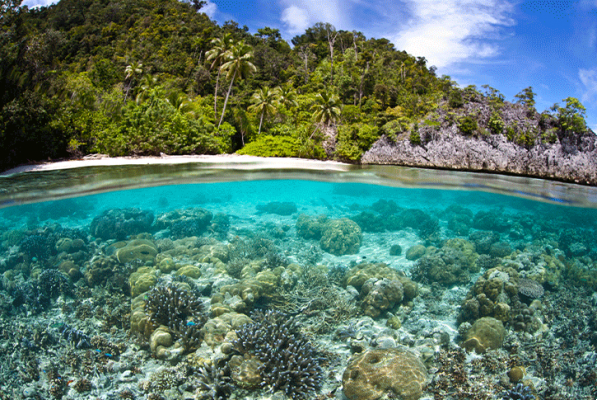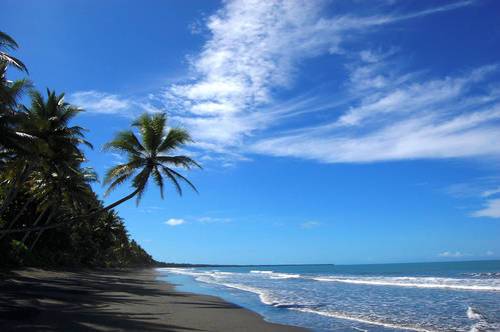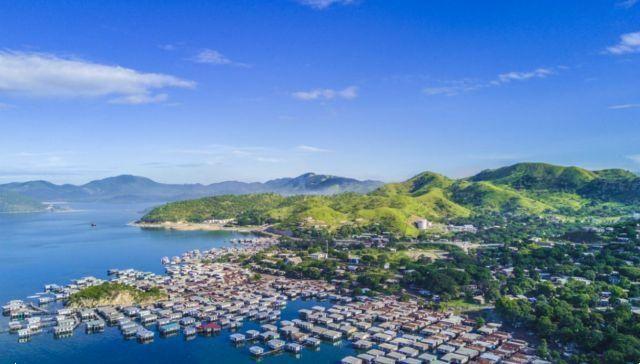 Trip to Papua to discover the Highlands, between wild nature and ancient traditions. Fascinating and unexplored territories, rich in history and culture
Trip to Papua to discover the Highlands, between wild nature and ancient traditions. Fascinating and unexplored territories, rich in history and culture
Papua or Papua New Guinea is a state in Oceania in the Pacific Ocean, south of the equator, the result of the union of the eastern part of New Guinea and some nearby islands, including the northern Solomon Islands, the 'Admiralty and the Bismarck Archipelago. The western half of New Guinea forms the Indonesian provinces of Papua and West Papua while to the north lies a mountainous relief that extends along a chain of active volcanoes.
A trip to Papua New Guinea is equivalent to a total immersion in and gentle cosmetics wild, in traditions cultural and historical of the most "primitive" populations on the planet. Land of researchers and anthropologists attracted to this country which in many respects is one of the most unknown and unexplored places on the planet, Papua New Guinea brings together over 600 tropical islands with magnificent underwater seabeds and is three-quarters covered by a tropical forest.
To the north of Papua is the region of Highlands, composed of seven provinces. We begin with a journey through the geography and cultures of the Western Highlands in the Western Highlands province, which features a rugged morphology composed of swamps and essentially mangrove coastal plains, mountain ranges covered in lush rainforests, waterways and rugged cliffs limestone and small valleys dotted with small agricultural farms. Thanks to the inaccessibility of the still little-known and uncontaminated territory, around a hundred ethnic groups with different cultures closely linked to the Neolithic still coexist.
This territory of Papua was explored for the first time by the German Carl Lautebach in 1896, who named the valley after the German commissioner, Kurt von Hagen, who at the time administered the north-eastern territory of New Guinea. However, the arrival of the first European settlers dates back to 1933, with an expedition organized by the New Guinea Goldfields company to search for gold in that area. The first gold miners and missionaries created the first administrative center in the Hagen Range, thus upsetting commercial traditions, a form of barter whose currency consisted of the exchange of pigs and shells, altering the local economy.
Today, the capital of this region is Mount Hagen, a relatively young and modern economic center of the Highlands which takes its name from the highest peak of the Hagen Range of almost 4.000 meters high, located on the western slope of the Waghi Valley. In the valley floor there are plantations of sweet potatoes, coffee, tea and vegetables. But here there are other fascinating elements of Papua such as the numerous villages of local tribes such as that of the Melpa; to the west, those of Tambul and the Nebilyer,; to the north are those of the Baiyer, the Jimi and the Wahgi.
Each of these groups is located less than 50 km away from the city of Mount Hagen but they all have a different language, customs, traditions and “bilas”, body decorations. In this area every year, from 17 to 19 August, there is a ceremony called "Sing Sing” which attracts tourists from all parts of the world. During these two days the different tribes of the region stage ancient battles by wearing their ceremonial costume, painting their faces, and carrying out initiation rituals accompanied by music, dances and songs with the aim of reviving the ancient traditions of the Highlands. Here you can admire an innumerable quantity of tropical birds and flowers typical of Papua New Guinea.
From here it is possible to reach the dense tropical forest on the Karawari River in the region "Arambas", one of the most remote and uncontaminated areas of Papua which hosts an immense variety of flora and fauna along the streams and lakes. A curious experience is the exploration of the villages on board a small boat which will allow you to come into contact with the fascinating culture of the Karawi, the local tribe and their traditions or witness the preparation of sago, the main dish of the populations they live along the river.
Also worth trying is the itinerary that follows the fiume Sepik, the longest river in New Guinea, along which we still find tropical forests, swamps and mountains. On the banks of the waterway there are a line of villages that can only be reached by boats and canoes. A desolate territory far from any modernity, in fact here there are no roads, shops or telephones and the inhabitants live by fishing and gathering. Their tribal art of local craftsmanship such as masks, drums and sculptures is famous and integrates with their daily life and the animist beliefs often found in lands such as those of Papua.
With a domestic flight you can also reach Tari Valley, a lush forest full of trees where it is possible to climb the paths, Tibetan bridges and reach isolated waterfalls. Here you can admire the various shades of wild orchids, gingers, rhododendrons and many other flowers and plants, as well as learn about the Huli, one of the largest ethnic groups in the Highlands. The discovery of the existence of this clan is rather recent: it dates back only to 1935 and its inhabitants proudly display their headgear adorned with decorations of feathers and flowers, their traditions and their lifestyle which is still pervaded by very ancient beliefs and magical. This valley is also populated by a great variety of animals, in particular thirteen different species of birds of paradise.
From Rome it takes about 30 hours to get to the international airport a Port Moresby, in Papua, with stopovers in Hong Kong, Manila, Singapore, Cairns, Brisbane, Sydney or Jakarta. Travel from Port Moresby airport to other locations scattered across the territory of Papua New Guinea are guaranteed by internal flights of the national company Air Niugini which stops in all the main cities. To visit the country you must naturally have a valid passport as well as an entry visa which can be issued upon arrival at the airport.






